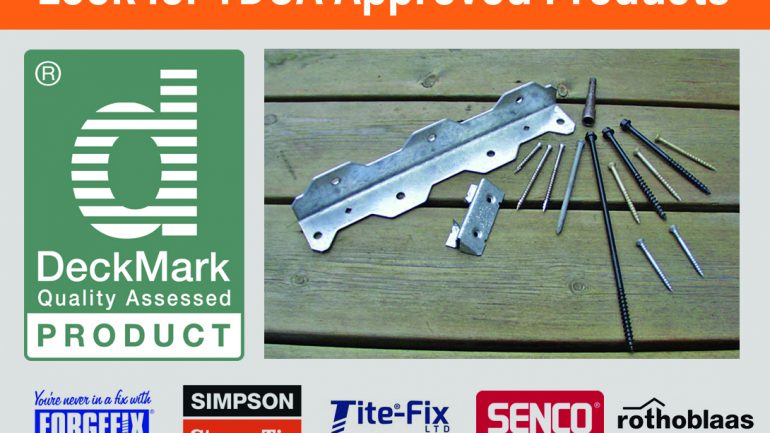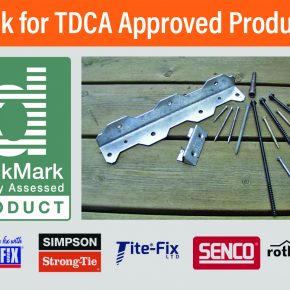Corrosion is the biggest threat to the performance of outdoor metal fixings – its consequences range from unsightly stains on the surface of wood to the loss of load bearing capability and premature failure. As the deterioration of a deck fixing is often unseen, failures can occur without any warning causing the safety of the structure to be compromised.
Recommended fixings for timber deck boards*
Screws provide a number of advantages over nails – they are unlikely to lift if movement occurs; are more easily removed to allow access; are less likely to be damaged during installation and hammer dents on boards are avoided.
Specialised decking screws are available which include features such as: self-drilling threads and self-countersinking heads. All fixings should be between 2-3 times the length of the board thickness (unless the fixing manufacturer can substantiate any different). On hardwoods or dense species softwoods, the use of screws is always recommended – pre-drill pilot holes with 2mm oversized clearance and countersink slightly below the surface.
To retain the aesthetic of the surface there are several ‘secret fixing’ systems on the market. Fixings can be inserted diagonally into the sides of the board with specialised tools (if board depth is sufficient) or clip systems offer alternative concealment methods.
*Specialist fixings are used with wpc products – usually available from the deck product supplier. These include ‘secret’ fastener clips and colour matched trim fixings. Always follow the manufacturer’s installation instructions.
For more advice, visit www.tdca.org.uk or call 01977 558147



